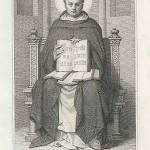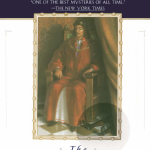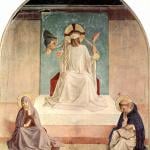 I’m taking a break from the Tim Powers tour this week to review a book recommended to me by Leah Libresco a couple of weeks ago. I’d just finished Tim Powers’ Declare, a supernatural spy thriller, and Leah posted about a book about real spies: Leo Marks’ Between Silk and Cyanide: A Codemaker’s War, 1941-1945
I’m taking a break from the Tim Powers tour this week to review a book recommended to me by Leah Libresco a couple of weeks ago. I’d just finished Tim Powers’ Declare, a supernatural spy thriller, and Leah posted about a book about real spies: Leo Marks’ Between Silk and Cyanide: A Codemaker’s War, 1941-1945. It seemed like a natural segue, and I grabbed it on Kindle.
And then I opened it up—and was enchanted. Leo Marks is an excellent story-teller, with a dry, self-deprecating wit; and he’s writing about a real time and place, and his own actions in that time and place, actions that had a real effect on the life and death of hundreds of agents in occupied Europe. The book is over 600 pages long, and I devoured it.
It begins,
In January 1942 I was escorted to the war by my parents in case I couldn’t find it or met with an accident on the way.
Which is to say, they took him to the railway station to travel to his brand new wartime job, working on codes for the British SOE—the Special Operations Executive, which was responsible for running and supporting Britain’s agents in the occupied countries.
The SOE was not the big noise in codes in WWII Britain; that would be Bletchley Park, where Alan Turing and others built one of the first computers to defeat the German Enigma machine. Bletchley Park belonged to the Secret Intelligence Service (SIS), a rival of the SOE’s. When Marks went to coding school, he was hoping to work with John Tiltman at Bletchley Park; but the instructor decided that he was the least promising student he’d seen. His twenty-four fellow students went to Bletchley, and Marks barely squeaked into the SOE.
The SOE was not primarily interested in codes, but codes were essential to the SOE’s work. The organization communicated with agents in the field by means of wireless telegraphy, with scheduled sessions (“skeds”) set up at particular times. And of course every message had to be sent in code, for the protection of the agent and his mission.
When Marks began his work, all SOE agents were using “poem codes”. Each agent had a memorized poem he (or she!) used as the basis for his code. When coding, he’d pick five words from the poem, and use them to generate a double transposition key, which he would then use to code his message. The code groups would begin with an indicator group: an indicator of which five words were used.
Marks was aghast.
The advantage of the poem codes was that the key was memorized; the agent had nothing to carry, and nothing to be found if he were stopped and searched. But the disadvantages, immediately obvious to Marks, were many:
- What’s memorized can’t be found, but it can be beaten out of you if you’re caught: and then all of your message traffic is compromised. Worse, the enemy can keep you active, with or without your help.
- If a message is broken the hard way, the words used to generate the key become known. All too often the words from just one or two messages can be used to identify the poem if it’s a well-known one…and then all of that agent’s past and future traffic is compromised without the agent or the SOE being any the wiser. As most agents used a favorite poem they’d learned in school, this was all too likely.
- It’s easy to make mistakes when generating the double-transposition key from the five words, especially when under stress (as all agents were); and this makes the message “indecipherable”.
Indecipherables were especially bad because such messages had to be resent. Now, every minute an agent spent transmitting was another minute in which he was visible to the German DF (direction-finding) trucks: another minute in which they could triangulate on his location. Each indecipherable brought that agent another minute closer to being captured and killed.
One of Marks’ jobs, consequently, was to “break” the indecipherable messages before the agent’s next sked, so that they wouldn’t need to be resent. He had the advantage of knowing the poem the agent was trying to use, and he devised a list of common mistakes the agent might have made and how to fix them. When he began, only about 3% of the indecipherables were decoded in time.
The remainder of the book concerns Marks’ one-man crusade to reduce the number of indecipherables and thus increase the expected life span of Britain’s agents. He taught his code breaking skills to the young women (FANYs in the parlance of the day) who manned the coding room. When an indecipherable came in, the women on duty (usually about thirty) would drop everything and begin trying to break it using all of Marks’ tricks, and dividing the labor so as to avoid duplication. They’d sometimes try many thousands of different approaches, but after a time as many as 90% of the indecipherables were decoded by the FANYs, leaving only the worst for Marks.
But that was only one side of his work. The other, in which he often faced stiff opposition, was devising newer, safer codes: codes that would be harder for the Germans to break and safer for the agents to use.
Although the codes are at the heart of the story this is not a technical work. Rather, the focus is equally on all of the people involved: Marks’ superiors, of course, but even more on the FANYs, and on the agents he was trying to keep alive, and on the many people he worked with to persuade them of the need for better codes.
There’s no way to collapse a 600-plus page book into a few words; you’ll have to read it. But Marks was ultimately successful; his new codes were used by agents all of the world, and in particular were used by all of the forces invading Europe on D-Day. Take that, Bletchley Park! John Tiltman came to call Marks “the one that got away.”
A bit of related literary trivia: Marks’ father owned a bookshop, Marks & Co; which is to say that he grew up on the premises of 84 Charing Cross Road, immortalized by Helene Hanff in the book of the same name. The bookshop figures largely in Marks’ tale; it’s where he learned to love codes, and it’s where he went when he had a problem to figure out and the solution wasn’t quite ready to emerge.
Anyway…read this book. It’s funny, fascinating, and ultimately quite moving, and I expect to be relating anecdotes from it to people for the rest of my life.












